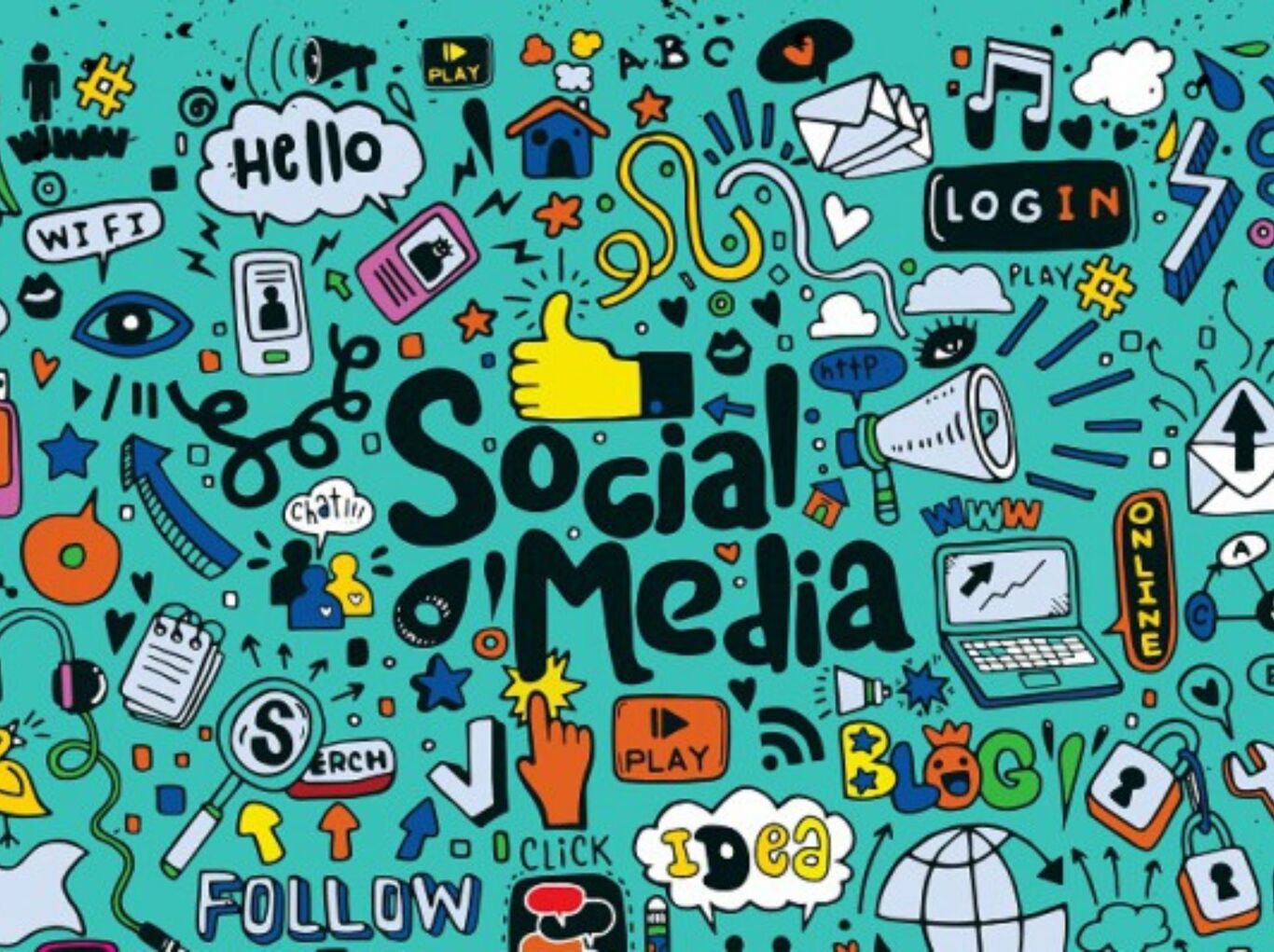What Is AdGPT? A Guide To Prescriptive Advertising Intelligence 2025

Last month, a CMO from one of India's fastest-growing D2C brands asked me a question that stopped me cold.
"We have dashboards. We have data scientists. We have weekly reports that take 40 hours to compile. And still - still - we're making the same decisions we made three years ago, just with prettier charts. What are we missing?"
She wasn't missing data. She had oceans of it.
She wasn't missing tools. Her tech stack cost ₹35 lakhs annually.
She wasn't missing talent. Her team had ex-Google, ex-Meta analysts.
What she was missing was something that didn't exist until recently: a system that tells you what to do, not just what happened.
That system is AdGPT.
If you've landed on this page, you're probably asking one of these questions:
- What exactly is AdGPT?
- How is it different from ChatGPT or other AI tools?
- What can it actually do for my marketing team?
- Is this just another dashboard with AI buzzwords?
- Why should I care about "prescriptive" advertising intelligence?
This guide answers all of them. Thoroughly. With specifics.
By the end, you'll understand not just what AdGPT is, but why it represents a fundamental shift in how marketing decisions get made - and whether it's right for your organization.
What is AdGPT? (The Simple Answer)
AdGPT is a prescriptive advertising intelligence platform that tells you exactly what to do to improve your marketing performance not just what's happening in your campaigns.
Let's break that down:
Prescriptive: AdGPT doesn't just describe your data or predict what might happen. It prescribes specific actions: "Move 20% of budget from Campaign A to Campaign B. Expected CAC reduction: 18%. Timeline: 48 hours."
Advertising Intelligence: AdGPT is built specifically for advertising and marketing. It understands CAC, ROAS, LTV, creative fatigue, audience saturation, channel dynamics, and attribution - because that's all it does.
Platform: AdGPT isn't a feature bolted onto something else. It's a complete system that connects to your marketing data, analyzes it in real-time, and generates actionable recommendations.
The 30-Second Explanation
Imagine having a senior performance marketing strategist who:
- Has access to all your marketing data across every platform (Google, Meta, Amazon, CRM, analytics - everything)
- Updates their knowledge every hour (not every week or quarter)
- Has worked on 50+ similar businesses and knows exactly what works
- Responds to any question in 10 seconds with specific, actionable recommendations
- Tells you not just what's wrong, but exactly how to fix it and what results to expect
That's AdGPT.
The Technical Explanation
AdGPT is built on three integrated layers:
Layer 1: Unified Data Engine
- Connects to 200+ marketing and business platforms via native APIs
- Ingests data in real-time (hourly refresh, not daily or weekly)
- Normalizes metrics across platforms (so "conversion" means the same thing everywhere)
- Maintains complete data lineage and audit trails
Layer 2: Intelligence Engine
- Machine learning models trained specifically on advertising dynamics
- Frameworks extracted from 50+ venture projects across 13+ industries
- Causal inference (understands why things happen, not just correlations)
- Continuous learning (improves with every recommendation and outcome)
Layer 3: Conversational Interface
- Natural language processing optimized for marketing questions
- Ask questions in plain English, get specific answers
- No SQL required, no dashboard building, no technical expertise needed
- Recommendations ranked by business impact with projected outcomes
How AdGPT Works (The Engine Under the Hood)
Under the hood, AdGPT runs a fast, four-step loop that ingests data, diagnoses issues and produces action-ready recommendations with projected outcomes - all in under 10 seconds.
The Four-Step Process
When you ask AdGPT a question - "My CAC increased 25% this week, what should I do?" - four things happen simultaneously:
Step 1: Real-Time Data Ingestion (1-2 seconds)
AdGPT pulls your latest data from every connected platform:
- Current campaign performance (updated within the last hour)
- Audience metrics and engagement signals
- Creative performance across all variants
- Customer data from your CRM
- Historical trends (30-90 days of context)
- Competitive benchmarks (where available)
This isn't cached data from yesterday's export. It's live.
Step 2: Diagnostic Analysis (2-3 seconds)
AdGPT's models analyze your situation across 50+ potential factors:
- What changed? (vs. your baseline, vs. historical patterns, vs. benchmarks)
- Why did it change? (root cause diagnosis—not symptoms, but actual causes)
- Is this a problem? (distinguishing signal from noise, real issues from normal variation)
- How urgent is it? (does this need immediate action or continued monitoring?)
Step 3: Recommendation Generation (2-3 seconds)
Based on the diagnosis, AdGPT generates ranked recommendations:
- Primary recommendation (highest projected impact)
- Secondary recommendation (alternative approach or risk mitigation)
- Tertiary recommendation (if the first two don't apply)
Each recommendation includes:
- Specific action to take
- Expected impact on your key metric
- Timeline for seeing results
- Confidence level based on your historical data
Step 4: Outcome Projection (1-2 seconds)
AdGPT projects the business impact:
- Expected change in CAC, ROAS, or whatever metric matters
- When you'll see results (24 hours? 7 days? 30 days?)
- Confidence interval (based on similar situations in your data)
- Potential secondary effects (downstream implications)
Total time: 6-10 seconds from question to ranked recommendations with projected outcomes.
A Real Example
Your question: "My ROAS dropped 30% in the last three days. What's happening?"
AdGPT's response:
"Analysis complete across 47 active campaigns.
Root Cause Identified: Your top-performing audience segment (lookalike_purchasers_180d) expanded automatically from 1.2M to 2.8M people on Monday due to Meta's audience expansion setting. The expanded segment is performing at 45% lower ROAS than your original audience.
Secondary Factor: Creative variant 'Summer_Sale_V3' CTR dropped from 3.8% to 1.9% over the same period—classic fatigue signal after 14 days of heavy impression volume.
Recommendations:
1. Immediate (Priority 1): Revert audience size to 1.2M by disabling audience expansion in Campaign Settings > Advantage Audience. Expected ROAS recovery: +22% within 48 hours.
2. Within 24 hours (Priority 2): Pause Creative 'Summer_Sale_V3' and activate pre-approved variant 'Summer_Sale_V5' from your creative library. Expected additional ROAS lift: +8-12%.
3. This week (Priority 3): Review all campaigns for unintended audience expansion settings. Three other campaigns have this enabled.
Projected Outcome: Combined actions should restore ROAS to 3.2x (from current 2.4x) within 72 hours. Confidence: High (similar pattern resolved successfully 4 times in your historical data)."
That's not a report. That's not a dashboard. That's a decision.
What Makes AdGPT Different From Everything Else
Most tools show data. Some help automate tasks. But almost none tell you what decision to make. This is where AdGPT breaks from the entire category - it behaves like an always-on strategist, not a dashboard.
AdGPT vs. ChatGPT (The Most Common Question)
This is the question we get most often: "Why can't I just use ChatGPT for this?"
Here's the honest answer:
| Dimension | ChatGPT | AdGPT |
|---|---|---|
| Your Data | No access (knowledge cutoff, no integrations) | Real-time access to all your marketing platforms |
| Recommendations | Generic advice based on general knowledge | Specific actions based on YOUR metrics, YOUR history |
| Advertising Expertise | Broad but shallow (knows a little about everything) | Deep and specialized (built only for advertising) |
| Outcome Projections | Cannot project outcomes for your business | Projects specific expected results with confidence levels |
| Learning | Static (doesn't learn from your outcomes) | Continuous (improves with every recommendation) |
| Execution | Advice only (you figure out implementation) | Actionable steps, some automated execution |
| Speed | Variable (depends on prompt engineering) | Consistent 6-10 seconds |
ChatGPT is brilliant for:
- Brainstorming campaign ideas
- Writing ad copy
- Explaining marketing concepts
- General research and learning
ChatGPT cannot:
- See your actual marketing data
- Diagnose why YOUR CAC increased
- Tell you which of YOUR campaigns to pause
- Project outcomes based on YOUR historical performance
- Learn from YOUR business results
The analogy: ChatGPT is like having access to every marketing textbook ever written. AdGPT is like having a senior strategist who's been inside your ad accounts for six months and knows exactly what's working and what isn't.
AdGPT vs. Dashboard BI Tools (Tableau, Looker, Power BI)
Dashboard tools are excellent at visualization. They're terrible at decision-making.
| Dimension | Dashboard BI Tools | AdGPT |
|---|---|---|
| Setup Time | 2-4 weeks minimum | 1-2 hours |
| Technical Skills Required | SQL, data modeling, dashboard design | None (natural language) |
| Output | Visualizations you interpret | Decisions you implement |
| Decision Cycle | 1-3 days (build → view → interpret → decide) | 15 minutes (ask → receive → implement) |
| Who Can Use | Analysts, data scientists | Any marketer |
| Prescriptive? | No (shows data, you decide) | Yes (tells you what to do) |
Dashboard tools are great for:
- Exploratory data analysis
- Custom reporting for stakeholders
- Ad-hoc deep dives by technical teams
Dashboard tools struggle with:
- Speed (building and interpreting takes time)
- Accessibility (requires technical expertise)
- Prescription (they show, they don't recommend)
AdGPT vs. Marketing Data Integration Tools (Supermetrics, Improvado)
Data integration tools solve a real problem: getting data out of platforms and into one place. But that's where they stop.
| Dimension | Data Integration Tools | AdGPT |
|---|---|---|
| Primary Function | Move data from A to B | Analyze data and recommend actions |
| Output | Unified data in spreadsheets/dashboards | Prescriptive recommendations |
| Intelligence | None (data plumbing) | ML models + domain expertise |
| Recommendations | No | Yes, ranked by impact |
| Conversational | No | Yes |
Data integration tools + AdGPT = Powerful combination. Some teams use Supermetrics for reporting and AdGPT for decision-making.
AdGPT vs. Marketing Automation (HubSpot, Marketo)
Marketing automation manages workflows and campaigns. AdGPT tells you which workflows and campaigns to prioritize.
| Dimension | Marketing Automation | AdGPT |
|---|---|---|
| Primary Function | Execute campaigns, manage workflows | Optimize campaign decisions |
| Scope | Email, nurture, lead management | All advertising channels + CRM |
| Intelligence | Rules-based automation | Prescriptive AI |
| Decision Support | Limited (A/B test results) | Comprehensive (what to do next) |
They work together: AdGPT might recommend "Increase email frequency to segment X" and your marketing automation executes it.
What AdGPT Can Actually Do (Capabilities Deep Dive)
Most marketers know what their platforms are doing - but not why. AdGPT closes that gap. These are the actual, ground-level capabilities that turn scattered performance signals into clear decisions.
Capability 1: Diagnose Performance Issues in Real-Time
The problem: Your ROAS dropped. Your CAC spiked. Something's wrong. You spend hours sometimes days figuring out what.
AdGPT's solution: Ask "What happened to my ROAS?" and get immediate root-cause diagnosis.
Real capability:
- Analyzes 50+ potential factors simultaneously
- Distinguishes correlation from causation
- Identifies primary cause and contributing factors
- Assesses severity (noise vs. actionable problem)
- Provides specific remediation steps
Example output:
"ROAS dropped 18% starting Tuesday 3 PM. Root cause: Audience overlap between Campaign 'Retargeting_AllVisitors' and Campaign 'Prospecting_Lookalike' increased to 34% (from 12% last week) due to audience expansion on the prospecting campaign. You're bidding against yourself. Recommendation: Add exclusion audiences to the prospecting campaign. Expected ROAS recovery: 15% within 72 hours."
Capability 2: Optimize CAC Without Sacrificing Volume
The problem: You need to reduce CAC, but every time you cut spend, volume craters.
AdGPT's solution: Finds inefficiencies in your current spend allocation without reducing total investment.
Real capability:
- Identifies high-CAC segments within campaigns
- Recommends budget reallocation (from inefficient to efficient)
- Suggests audience refinements that improve efficiency
- Proposes creative testing to combat fatigue
- Projects combined impact on both CAC and volume
Example output:
"Your blended CAC is ₹1,850. But CAC varies from ₹950 (Google Search Brand) to ₹3,200 (Meta Prospecting Cold). Recommendation: Reduce Meta Prospecting Cold by 25% (₹3.5L/month savings). Increase Google Performance Max by 15% (better efficiency). Reallocate remaining ₹1.5L to Meta Retargeting (highest LTV customers). Expected outcome: CAC reduction to ₹1,480 (20% improvement) with 5% volume increase. Timeline: 30 days for full effect."
Capability 3: Allocate Budget Across Channels Optimally
The problem: You have 6-8 channels. How much should each get? This decision usually takes weeks of analysis and internal debate.
AdGPT's solution: Analyzes channel efficiency and recommends optimal allocation based on marginal returns.
Real capability:
- Calculates LTV:CAC and efficiency metrics by channel
- Identifies marginal return curves (where does incremental spend perform best?)
- Recommends reallocation with expected outcomes
- Accounts for channel-specific dynamics (saturation, seasonality)
- Provides implementation timeline to minimize disruption
Example output:
"Current allocation: Google 35%, Meta 40%, Amazon 15%, Affiliate 10%. Recommended: Google 30%, Meta 35%, Amazon 20%, Affiliate 8%, TikTok 7% (new channel). Rationale: Amazon LTV:CAC improved to 4.8x (highest efficiency). TikTok showing 35% lower CAC than Meta for your category. Expected impact: Blended ROAS improvement 22%, CAC reduction 15%. Implementation: Shift over 14 days to allow platform learning."
Capability 4: Detect and Respond to Creative Fatigue
The problem: Creative performance degrades over time, but you don't notice until it's already cost you significantly.
AdGPT's solution: Monitors creative performance continuously and alerts before fatigue impacts results.
Real capability:
- Tracks CTR, conversion rate, and CPM trends by creative
- Identifies fatigue signals (typically 20-30% CTR decline)
- Recommends pause timing and replacement creative
- Suggests testing roadmap for new creative variants
- Learns optimal creative refresh cycles for your account
Example output:
"Creative Alert: 'Product_Hero_Video_V2' showing fatigue signals. CTR declined from 2.8% to 1.9% over 10 days (32% drop). CPM increased 18% as platform reduces delivery. Recommendation: Pause within 48 hours. Activate 'Product_Hero_Video_V4' (tested at 3.1% CTR in holdout). Also recommend launching test of 'UGC_Testimonial_V1' (expected CTR 2.5-3.5% based on similar creative performance)."
Capability 5: Crisis Response and Real-Time Intervention
The problem: At 3 PM on a Thursday, your main channel drops 40%. Revenue is hemorrhaging. You need answers now, not tomorrow.
AdGPT's solution: Instant diagnosis and emergency response recommendations.
Real capability:
- Real-time monitoring with alerting
- Immediate root-cause analysis
- Emergency action recommendations
- Risk assessment of intervention options
- Escalation guidance for severe issues
Example output:
"ALERT: Meta campaigns ROAS dropped 45% at 2:47 PM. Diagnosis: Platform-wide algorithm update affecting auction dynamics (not account-specific industry reports confirming). Immediate action: Increase bids by 12-15% to maintain delivery. Do NOT pause campaigns (will lose learnings). Do NOT make structural changes (algorithm will stabilize). Expected timeline: 4-6 hours for normalization. Monitor every 30 minutes. If not recovered by 8 PM, reduce spend by 30% temporarily*."
Capability 6: Multi-Touch Attribution and Channel Insights
The problem: You don't know which channels actually drive value vs. which just get credit.
AdGPT's solution: Attribution analysis that connects advertising to actual business outcomes.
Real capability:
- Multi-touch attribution modeling
- First-touch vs. last-touch vs. linear comparison
- Incrementality estimation
- Cross-channel journey mapping
- Revenue attribution by source
Example output:
"Attribution analysis (last 90 days): Google Search gets 45% of last-touch credit but only 28% of first-touch credit (capturing demand, not creating it). Meta gets 30% last-touch but 52% first-touch (demand generation engine). Recommendation: Value Meta higher in allocation decisions - it's driving the pipeline that Google converts. Consider 60/40 split favoring demand generation over demand capture."
Who AdGPT is Built For
AdGPT isn’t built for everyone - it’s built for teams where advertising decisions carry real financial weight. Whether you run a D2C brand, a SaaS funnel, a B2B pipeline or an agency desk, AdGPT adapts to how your business actually makes money.
E-Commerce and D2C Brands
If you're spending ₹10L-₹10Cr annually on advertising:
AdGPT helps you:
- Reduce CAC by 25-40% without losing volume
- Catch creative fatigue before it costs you
- Optimize ROAS in real-time (not weekly reports)
- Allocate budget across Google, Meta, Amazon efficiently
- Scale profitably during peak seasons
Typical results:
- 28% average CAC reduction in 90 days
- 35% reduction in time spent on reporting/analysis
- 3x faster decision cycles (days → hours)
SaaS Companies
If you're managing complex funnels with long payback periods:
AdGPT helps you:
- Connect advertising spend to actual revenue (not just MQLs)
- Optimize for LTV:CAC, not just CPL
- Identify which sources produce customers that retain
- Reduce wasted spend on low-converting channels
- Make budget decisions based on full-funnel data
Typical results:
- 22% improvement in qualified lead rate
- 30% reduction in CAC payback period
- Clear attribution from ad spend to closed revenue
B2B and Enterprise Marketing
If you're dealing with long sales cycles and complex attribution:
AdGPT helps you:
- Track marketing influence across 6-18 month cycles
- Attribute pipeline to marketing sources accurately
- Optimize account-based campaigns
- Connect brand spend to pipeline impact
- Make confident budget decisions despite attribution complexity
Typical results:
- 40% improvement in marketing-sourced pipeline visibility
- 25% increase in marketing-influenced win rates
- Defensible ROI metrics for executive reporting
Agencies Managing Multiple Clients
If you're optimizing advertising for multiple brands:
AdGPT helps you:
- Monitor all client accounts from unified interface
- Catch issues before clients notice
- Generate insights and recommendations at scale
- Reduce analyst time on routine optimization
- Deliver better results with same team size
Typical results:
- 50% reduction in routine analysis time
- Faster client response times
- Improved client retention through better performance
The Technology Behind AdGPT
Under the hood, AdGPT combines a high-speed data architecture, continuously trained ML models and a conversational interface tuned for marketers. Together, they turn raw signals into clear, prescriptive actions within seconds.
Data Architecture
Connections: AdGPT connects to 200+ platforms including:
- Advertising: Google Ads, Meta Ads, Amazon Advertising, LinkedIn Ads, TikTok Ads, The Trade Desk, DV360
- E-commerce: Shopify, WooCommerce, Magento, Amazon Seller Central, Flipkart
- CRM: Salesforce, HubSpot, Zoho, Freshsales
- Analytics: Google Analytics 4, Mixpanel, Amplitude, Segment
- Data Warehouses: Snowflake, BigQuery, Redshift
- Custom: REST API for proprietary data sources
Data Refresh:
- Standard: Hourly refresh for all connected platforms
- Critical metrics: Near real-time for high-spend accounts
- Historical: 90+ days of historical data maintained
Security:
- SOC 2 Type II compliant
- GDPR compliant
- Data encryption at rest and in transit
- No data sharing between customer accounts
- Complete audit trails
Machine Learning Models
Training Data:
- Models trained on anonymized patterns from 50+ ventures across 13+ industries
- Continuous learning from platform algorithm changes
- Regular retraining on new advertising dynamics
Model Types:
- Diagnostic models (what caused performance change)
- Predictive models (what will happen if...)
- Prescriptive models (what should we do)
- Outcome projection models (expected results)
Domain Expertise Embedded:
- Audience saturation curves
- Creative fatigue patterns
- Platform algorithm dynamics
- Seasonality and trend detection
- Cross-channel cannibalization
Conversational Interface
Natural Language Processing:
- Optimized for marketing terminology
- Understands context from conversation history
- Handles ambiguous queries with clarifying questions
- Supports follow-up questions and drill-downs
Query Types Supported:
- Diagnostic: "Why did my CAC increase?"
- Prescriptive: "How do I reduce CAC?"
- Exploratory: "Show me my best-performing audiences"
- Comparative: "How does Google compare to Meta this month?"
- Predictive: "What will happen if I increase budget 20%?"
How to Get Started with AdGPT
Getting started with AdGPT is intentionally simple. The platform is built so marketers - not engineers it can connect data, get diagnostics and start receiving high-impact recommendations in under 48 hours.
The Onboarding Process
Day 1: Connect Your Data (1-2 hours)
- OAuth connections to your ad platforms (click-through, no engineering required)
- Connect your analytics and CRM (same process)
- Define your key metrics (how you calculate CAC, ROAS, etc.)
- AdGPT begins ingesting historical data
Day 2-3: Initial Diagnostics
- AdGPT analyzes 30-90 days of historical performance
- Generates initial findings and quick wins
- Identifies largest optimization opportunities
- Creates baseline for measuring improvement
Week 1: First Recommendations
- Start asking questions and receiving recommendations
- Implement 3-5 quick wins to build confidence
- Team gets comfortable with conversational interface
- See early results from initial optimizations
Week 2-4: Scaling Usage
- Expand to larger optimization recommendations
- Integrate AdGPT into weekly planning rhythms
- Measure results against baseline
- Train team members across the organization
Month 2+: Full Integration
- AdGPT becomes primary decision-support tool
- Proactive alerts and monitoring active
- Team operates at 10x faster decision velocity
- Continuous improvement as system learns your business
What You'll Need
Technical Requirements (Minimal):
- Admin access to your ad platforms (for OAuth connection)
- Access to analytics platforms (GA4, etc.)
- Conversion tracking properly configured
- No engineering resources required
Organizational Requirements (Important):
- Agreement on key metrics (how you define success)
- Willingness to act on recommendations quickly
- Executive sponsorship for change management
- Performance marketing team buy-in
Investment and ROI
Pricing:
- Starter: ~$100/month (for smaller ad spends)
- Growth: Custom pricing based on ad spend and complexity
- Enterprise: Custom pricing with dedicated support
Typical ROI:
- Average payback period: 10-15 days
- 90-day CAC improvement: 25-40%
- Time savings: 30-40 hours/month in analysis time
- Decision velocity improvement: 10x faster
ROI Example:
- Monthly ad spend: ₹50L
- Current CAC: ₹1,500
- AdGPT-driven CAC reduction: 30% → ₹1,050
- Monthly savings: ₹450 × customer volume
- At 1,000 customers/month: ₹4.5L monthly savings
- AdGPT cost: ~₹75K/month
- Net ROI: 6x in month one
Common Questions About AdGPT
Every new technology brings questions, and AdGPT is no exception. Most teams want clarity before adopting a system that influences real spend, real metrics and real decisions. This section addresses the concerns we hear most often.
"Is this just another AI hype tool?"
Fair question. The market is flooded with "AI-powered" everything.
Here's what makes AdGPT different:
- Specific outcomes: We publish documented results (25-40% CAC reduction, not vague "improvement")
- Specialized, not general: Built only for advertising, not adapted from generic AI
- Measurable: You'll see results in your actual metrics within weeks, not "eventually"
- Refundable: If you don't see improvement in 90 days, we'll work with you until you do
"What if AdGPT makes wrong recommendations?"
It happens. Here's how we handle it:
- Confidence levels: Every recommendation includes a confidence score. Low-confidence recommendations are flagged
- Human-in-the-loop: AdGPT recommends, you decide. Nothing happens without your approval
- Learning from mistakes: When recommendations don't work, AdGPT learns and improves
- Outcome tracking: We track recommended vs. actual outcomes to continuously improve accuracy
"Do I need to replace my existing tools?"
No. AdGPT complements your existing stack:
- Keep your dashboards for stakeholder reporting
- Keep your automation tools for execution
- Keep your analytics for deep exploration
- Add AdGPT for decision-making speed
"How is my data protected?"
- Your data is never shared with other customers
- We don't train models on your specific data without permission
- SOC 2 Type II certified
- GDPR compliant
- You can delete your data at any time
"What if I already have a data team?"
AdGPT makes your data team more valuable, not less.
Your data team currently spends 60-70% of time on:
- Data extraction and cleaning
- Building dashboards and reports
- Answering repetitive questions
With AdGPT:
- Routine analysis is automated
- Data team focuses on strategic projects
- Faster insights for the whole organization
- Data team becomes strategic advisors, not report generators
The Bigger Picture - Why AdGPT Matters Now
We're witnessing a fundamental change in advertising intelligence:
2015-2020: The Dashboard Era
- Competitive advantage = having dashboards
- Good enough to see what happened
- Human interpretation required
- Decision cycles measured in days
2020-2024: The Data Integration Era
- Competitive advantage = unified data
- Multiple platforms in one view
- Still required human analysis
- Decision cycles measured in 1-2 days
2024-2027: The Prescriptive Era
- Competitive advantage = decision velocity
- Systems that tell you what to do
- AI handles analysis, humans handle judgment
- Decision cycles measured in minutes
By 2027: Organizations without prescriptive ad intelligence will face 25-40% efficiency penalties compared to those who have it. This isn't speculation—it's the compounding effect of 10x faster decisions over 36 months.
Why GrowthJockey Built AdGPT
We didn't start as a software company. We started as venture architects - designing, building, and scaling companies from 0-1 and 1-100.
After working with 50+ ventures across 13+ industries, we kept seeing the same pattern:
The ventures that won weren't the ones with the best ideas or even the best products. They were the ones that could make good decisions faster than their competition.
Every venture had data. Every venture had dashboards. But decision velocity - the speed from insight to action varied wildly. The fastest teams made decisions in hours. The slowest took weeks.
We built AdGPT to close that gap. To take the frameworks we'd developed across 50+ ventures and make them available to any marketing team that needs faster, better decisions. Our full journey is detailed in the GrowthJockey × Intellsys AdGPT Venture Architect Story.
The Competitive Advantage Window
Here's the uncomfortable truth:
If you adopt prescriptive advertising intelligence in 2025, you'll build 12-18 months of learning advantage. You'll make 10x more decisions, run 3x more experiments, and compound improvements that become insurmountable.
If you wait until 2027, you'll be playing catch-up against competitors who've already optimized their optimization.
The window for early-mover advantage is open now. It won't stay open forever.
Your Next Step
You've read 9,000+ words about AdGPT. You understand what it is, how it works, and why it matters.
Now you have a choice:
Option 1: Start Your Free 14-Day Trial
- Connect your platforms in 1-2 hours
- Get your first recommendations within 24 hours
- See real optimization opportunities in your own data
- No credit card required
- Full access to all features
Option 2: Schedule a 20-Minute Strategy Call
- Talk with our team about your specific situation
- See a live demo with scenarios relevant to your business
- Get a realistic assessment of what AdGPT can do for you
- No pressure, no hard sell - just clarity
Option 3: Keep Learning
If you're not ready to try or talk, that's fine. Here are resources to continue your research:
- Advertising Intelligence: The Complete Resource for Marketing Leaders (2025-2026)
- From Dashboard to Decisions: How Intellsys AdGPT Defines the Era of Prescriptive Ad Intelligence
- Five Categories of Advertising Intelligence Platforms: From Dashboards to Prescriptive AI
- Best Advertising Intelligence Platforms 2025: Top 5 Tools Ranked
- Beyond Chatbots: How Intellsys AdGPT Is Redefining Conversational Marketing Intelligence
- How Advertising Intelligence Differs by Industry: E-Commerce vs. SaaS vs. B2B
AdGPT at a Glance
What AdGPT Is
| Aspect | Description |
|---|---|
| Category | Prescriptive Advertising Intelligence Platform |
| Core Function | Tells you what to do to improve marketing performance |
| Data Sources | 200+ platform integrations |
| Refresh Rate | Hourly (real-time for critical metrics) |
| Interface | Conversational (natural language) |
| Output | Specific recommendations with projected outcomes |
What AdGPT Does
| Capability | Description |
|---|---|
| Diagnose | Root-cause analysis of performance changes |
| Optimize | CAC, ROAS, and efficiency recommendations |
| Allocate | Budget distribution across channels |
| Alert | Proactive notification of issues |
| Project | Expected outcomes of recommendations |
| Learn | Continuous improvement from results |
AdGPT vs. Alternatives
| Tool Type | Best For | Limitation |
|---|---|---|
| ChatGPT | Brainstorming, content | No access to your data |
| Dashboards | Visualization, exploration | Requires interpretation |
| Data Integration | Unified data | No recommendations |
| Marketing Automation | Workflow execution | Limited decision support |
| AdGPT | Decision-making velocity | Requires action to see results |
Results You Can Expect
| Metric | Typical Improvement | Timeline |
|---|---|---|
| CAC | 25-40% reduction | 90 days |
| ROAS | 15-35% improvement | 60 days |
| Decision Speed | 10x faster | Immediate |
| Analysis Time | 30-40 hours saved/month | 30 days |
| Payback Period | 10-15 days | First month |
Conclusion: The Question Isn't Whether - It's When
That CMO I mentioned at the beginning? She started her AdGPT trial three weeks ago.
Last week, she sent me a message: "We found ₹12L in monthly waste in our first diagnostic. Twelve lakhs. Sitting in plain sight in our dashboards for months. No one saw it because we were looking at charts, not getting recommendations."
That's the gap AdGPT closes.
Not more data. Not prettier dashboards. Not another tool to learn.
Just answers. Specific, actionable, projected answers to the questions that keep marketing leaders up at night.
What should I do about my rising CAC? Which campaigns should I pause? Where should I put my next rupee of ad spend? Why did performance drop yesterday?
You've been asking these questions for years. You've been waiting days or weeks for answers.
AdGPT answers them in seconds.
The question isn't whether prescriptive advertising intelligence is the future. It is.
The question is whether you'll be among the first to have it - or among those playing catch-up.
AdGPT is built by Intellsys, a product of GrowthJockey - venture architects who've designed, built, and scaled 50+ companies across 13+ industries. We didn't build AdGPT because we're a software company. We built it because we kept running into the same problem with every venture we worked with: decisions were too slow. Now they don't have to be.








